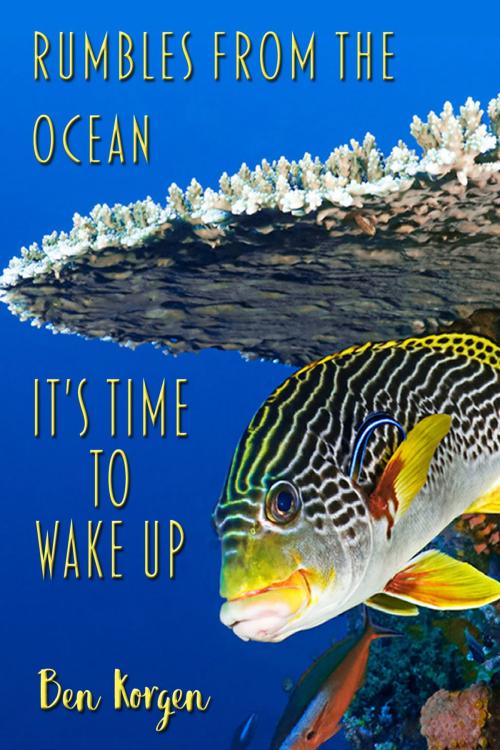Rumbles from the Ocean
It's Time to Wake Up
Nonfiction, Science & Nature, Nature, Environment, Environmental Conservation & Protection| Author: | Ben Korgen | ISBN: | 9781506903538 |
| Publisher: | First Edition Design Publishing | Publication: | January 15, 2017 |
| Imprint: | First Edition Design Publishing | Language: | English |
| Author: | Ben Korgen |
| ISBN: | 9781506903538 |
| Publisher: | First Edition Design Publishing |
| Publication: | January 15, 2017 |
| Imprint: | First Edition Design Publishing |
| Language: | English |
This warm-hearted introduction to the world ocean and its solvable problems is accessible for readers without specialized backgrounds in science, mathematics or statistics. The author focuses on how the world ocean functions normally, what has happened to it in recent years and what humans can do to help the oceans recover from its wounds and prosper far into the future. He writes in ways that cause readers to feel he is talking directly to each of them one-on-one. Although the book's believability is based on scientific research, it has a palpable flavor of the humanities. Part of this flavor comes from the insertion of three poems, each of which is clearly linked to events or concepts introduced in the previous chapter. To enrich the book's explanations, the usual two-dimension illustrations found in other non-fiction books are replaced by browser addresses that jump readers directly into the rich collection of internet still images, animations, demonstrations and at sea videos. The chapter titles are Never Say Never, Slave Labor with Enlightenment, Crossing the Bar, When the Weather Turned Around, Poem in October, Skimming the Surface Far from Land, Lighting Up, Proportions, The Importance of Rivers, In Upstream Waters, Our Layered World, The Atmosphere, The Mixed Layer, The Upper Ocean, The Deep Sea, The Ocean Floor, Stronger Winds, Crumbling Coral Reefs, The Ocean Overwhelmed, Biomass Losses, Species Replacement, Dolphins, Sharks, Rogue Waves, Seiches, Tsunamis, Tides, Sea Levels, Suffocation on Land, Suffocation in the Upper Ocean, Suffocation in the Deep Sea, But What Should We Do?, The Littlest Hero, Getting Ideas and Getting the Best Ideas.
This warm-hearted introduction to the world ocean and its solvable problems is accessible for readers without specialized backgrounds in science, mathematics or statistics. The author focuses on how the world ocean functions normally, what has happened to it in recent years and what humans can do to help the oceans recover from its wounds and prosper far into the future. He writes in ways that cause readers to feel he is talking directly to each of them one-on-one. Although the book's believability is based on scientific research, it has a palpable flavor of the humanities. Part of this flavor comes from the insertion of three poems, each of which is clearly linked to events or concepts introduced in the previous chapter. To enrich the book's explanations, the usual two-dimension illustrations found in other non-fiction books are replaced by browser addresses that jump readers directly into the rich collection of internet still images, animations, demonstrations and at sea videos. The chapter titles are Never Say Never, Slave Labor with Enlightenment, Crossing the Bar, When the Weather Turned Around, Poem in October, Skimming the Surface Far from Land, Lighting Up, Proportions, The Importance of Rivers, In Upstream Waters, Our Layered World, The Atmosphere, The Mixed Layer, The Upper Ocean, The Deep Sea, The Ocean Floor, Stronger Winds, Crumbling Coral Reefs, The Ocean Overwhelmed, Biomass Losses, Species Replacement, Dolphins, Sharks, Rogue Waves, Seiches, Tsunamis, Tides, Sea Levels, Suffocation on Land, Suffocation in the Upper Ocean, Suffocation in the Deep Sea, But What Should We Do?, The Littlest Hero, Getting Ideas and Getting the Best Ideas.















